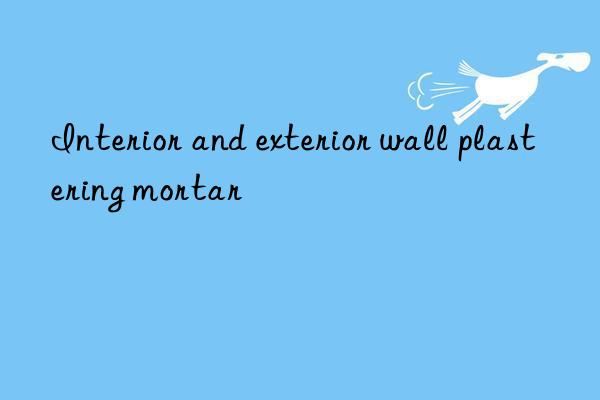
Plastering is defined in DIN 18550 Part 1 as “the application of one or more layers of plaster mortar to walls and ceilings to a specified thickness and hardening to obtain final properties”. Dry-mixed interior and exterior plastering mortars are classified according to the type of cementitious material used:
Stucco and plastering mortars using inorganic binders (cement, gypsum or possibly hydrated lime)
Decorative stucco mortars using cement, redispersible powder or possibly hydrated lime as a binder. This does not include dry-mixed interior and exterior plastering mortars that use other bonding materials, such as potassium silicate binders, as Redispersible powder as sole binder, hydrated lime and clay as sole binder. Mortars need to withstand a range of external effects, such as resistance to weathering, chemical and mechanical effects. Climatic effects refer to moisture intrusion or temperature fluctuations. Additionally, grouts must provide adequate resistance to rainwater washout, as they are also used in bathrooms and other wet rooms. Cement or lime cement mortar can be used to meet these requirements.
Plasters and mortars must have good water vapor permeability and be suitable for painting and hanging heavy wallpaper. Inorganic plastering is generally applied in a single layer with a thickness of about 10-30mm. It is also used as a uniform and smooth base or load-bearing layer for subsequent decorative coatings, such as ceramic tiles, paints and decorative putties. Cement-based plasters are used for exterior coatings and wet rooms, while gypsum-based plasters are reserved for interior walls.
In most European countries (except the UK), machine-applied plaster/mortar is now much more common than hand-applied plaster/mortar. Therefore, plasters/mortars intended for machine application must quickly acquire high consistency and high water retention. Both parameters are controlled by selecting the appropriate grade of methylcellulose ether. In addition to machine application, lightweight mortars are also a growing trend.
Cement-based and lime-cement-based mortars. The main requirements for cement-based and lime-cement-based mortars are good sag resistance during application, ease of application, low adhesion to leveling tools and the absence of cracks after hardening. To meet these requirements, ingredients need to optimize particle size and add additives such as methylcellulose ether, starch ether and air-entraining agents. Table 3 lists typical formulations for lime-cement plasters and cement-based lightweight plasters.
Typical formulations (by weight percent) of standard lime-cement plasters and cement-based lightweight plasters
Ingredients Lime-cement plasters Cement-based lightweight plasters
Ordinary Portland cement CEMI32.5R 8-12 18-25
Hydrated lime 6-8 0-5
0.2-0.8mm quartz sand 80- 85 -
Limestone sand- 60-75
Limestone powder- 5-7
Expanded polystyrene- 1-2
Starch ether- 0.01-0.02
Hydrophobic agent 0.15-0.25 0.1-0.2
Air-entraining agent 0.015-0.03 0.03-0.05
Methyl cellulose ether ( Viscosity is 15000 MPa seconds) 0.08-0.12 0.1-0.12</p

 微信扫一扫打赏
微信扫一扫打赏

